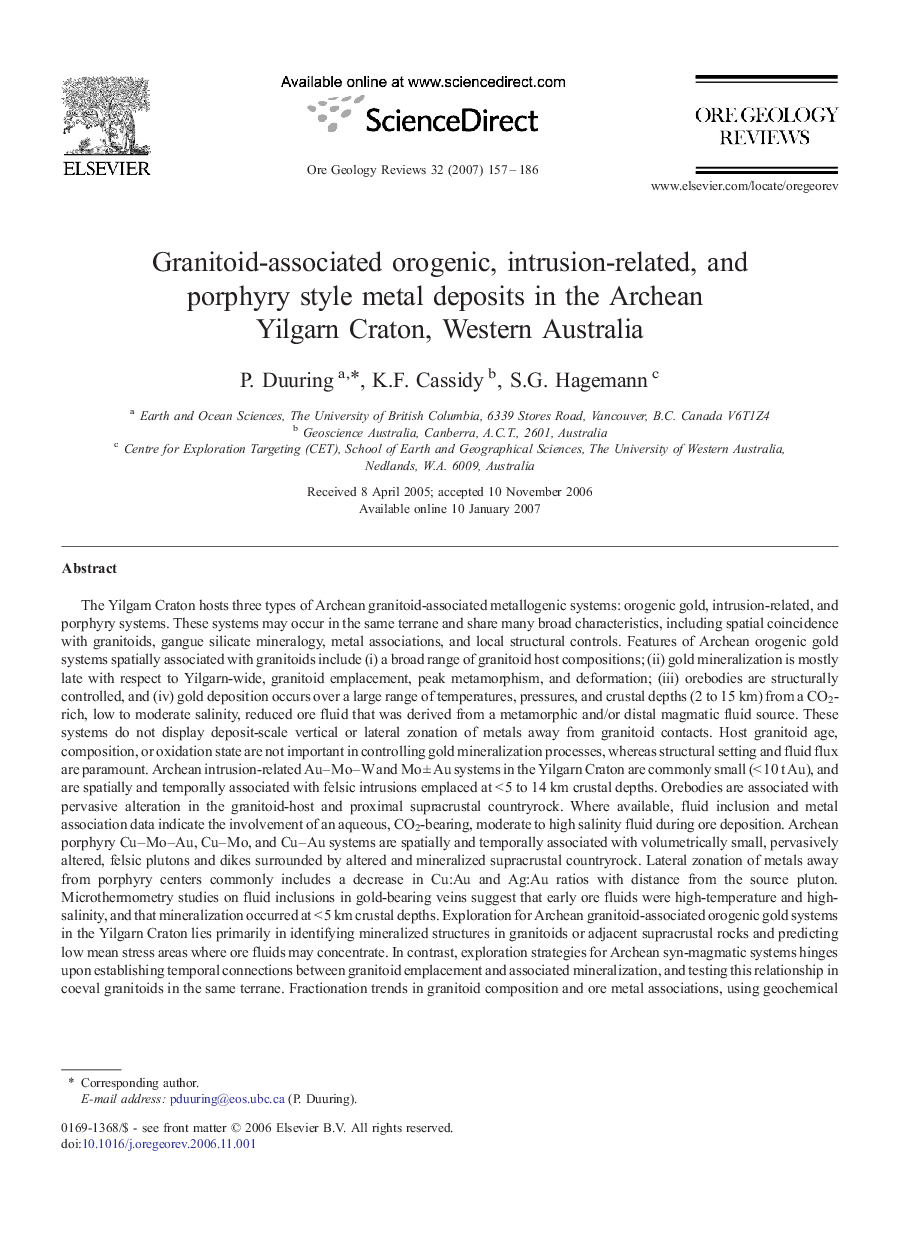| کد مقاله | کد نشریه | سال انتشار | مقاله انگلیسی | نسخه تمام متن |
|---|---|---|---|---|
| 4697885 | 1637269 | 2007 | 30 صفحه PDF | دانلود رایگان |

The Yilgarn Craton hosts three types of Archean granitoid-associated metallogenic systems: orogenic gold, intrusion-related, and porphyry systems. These systems may occur in the same terrane and share many broad characteristics, including spatial coincidence with granitoids, gangue silicate mineralogy, metal associations, and local structural controls. Features of Archean orogenic gold systems spatially associated with granitoids include (i) a broad range of granitoid host compositions; (ii) gold mineralization is mostly late with respect to Yilgarn-wide, granitoid emplacement, peak metamorphism, and deformation; (iii) orebodies are structurally controlled, and (iv) gold deposition occurs over a large range of temperatures, pressures, and crustal depths (2 to 15 km) from a CO2-rich, low to moderate salinity, reduced ore fluid that was derived from a metamorphic and/or distal magmatic fluid source. These systems do not display deposit-scale vertical or lateral zonation of metals away from granitoid contacts. Host granitoid age, composition, or oxidation state are not important in controlling gold mineralization processes, whereas structural setting and fluid flux are paramount. Archean intrusion-related Au–Mo–W and Mo ± Au systems in the Yilgarn Craton are commonly small (< 10 t Au), and are spatially and temporally associated with felsic intrusions emplaced at < 5 to 14 km crustal depths. Orebodies are associated with pervasive alteration in the granitoid-host and proximal supracrustal countryrock. Where available, fluid inclusion and metal association data indicate the involvement of an aqueous, CO2-bearing, moderate to high salinity fluid during ore deposition. Archean porphyry Cu–Mo–Au, Cu–Mo, and Cu–Au systems are spatially and temporally associated with volumetrically small, pervasively altered, felsic plutons and dikes surrounded by altered and mineralized supracrustal countryrock. Lateral zonation of metals away from porphyry centers commonly includes a decrease in Cu:Au and Ag:Au ratios with distance from the source pluton. Microthermometry studies on fluid inclusions in gold-bearing veins suggest that early ore fluids were high-temperature and high-salinity, and that mineralization occurred at < 5 km crustal depths. Exploration for Archean granitoid-associated orogenic gold systems in the Yilgarn Craton lies primarily in identifying mineralized structures in granitoids or adjacent supracrustal rocks and predicting low mean stress areas where ore fluids may concentrate. In contrast, exploration strategies for Archean syn-magmatic systems hinges upon establishing temporal connections between granitoid emplacement and associated mineralization, and testing this relationship in coeval granitoids in the same terrane. Fractionation trends in granitoid composition and ore metal associations, using geochemical indices such as Rb/Sr versus Fe2O3/FeO, are demonstrated in Phanerozoic terranes but are presently ill-defined in the Yilgarn Craton. Crustal depth estimation is important in defining areas likely to have preserve shallow-forming, Archean porphyry systems.
Journal: Ore Geology Reviews - Volume 32, Issues 1–2, September 2007, Pages 157–186